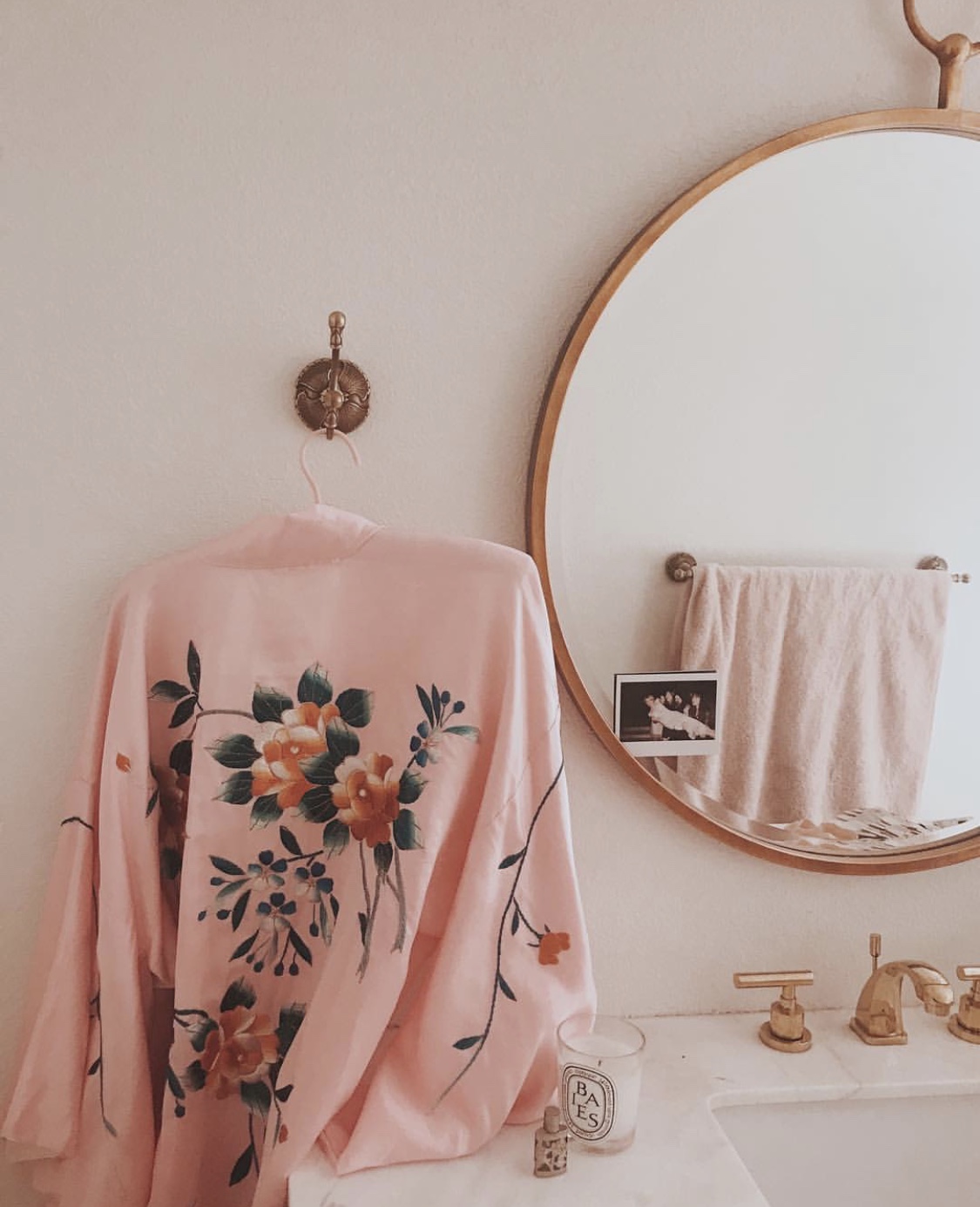One of the things I’ve noticed about being an entrepreneur is that stress, worry and exhaustion can easily creep into our lives like a cozy pair of jeans, leaving us feeling overwhelmed and out of sync. When life starts to feel like one big jumble, taking a day away—even if it’s just at home—can be the ideal remedy. Creating your own wellness retreat at home offers a personal escape, a chance to reset, and a gentle reminder to prioritize self-care.
With a little planning and structure, a DIY retreat can help you find that sweet balance between relaxation, mindfulness, and self-reflection. By carving out time for self-care and intentional moments, you can shift your perspective, quiet the noise, and reconnect with your creativity.
Planning a wellness retreat doesn’t have to mean traveling to an expensive resort or spending hundreds on spa services. You can experience the same rejuvenating benefits right in the comfort of your home.
With a little preparation, some self-care essentials, and a sprinkle of creativity, you can create a sanctuary that allows you to relax, recharge, and reconnect—all without breaking the bank.
Related Reading: 8 self care habits to adopt before the holidays
Here’s a step-by-step guide on planning an affordable wellness retreat at home.
Step 1: Set the Intention
Start by deciding the purpose of your retreat. Do you want to focus on relaxation, recharging, or just escaping the daily hustle? Your intention will guide how you structure the retreat. Take a few minutes to jot down your goals, whether it's relieving stress, finding inspiration, or getting quality “me-time.” This mental preparation helps set a calming tone.
Step 2: Declutter and Create a Peaceful Environment
Your environment plays a huge role in how relaxed you feel. Take some time to tidy up, declutter, and create a cozy atmosphere in your space. If you’re dedicating the weekend to this, focus on your bedroom, bathroom, and living area, where you'll spend most of your retreat. Freshen up your space by adding soothing touches like soft blankets, pillows, and candles, or use essential oil diffusers with calming scents like lavender or eucalyptus.
Related Reading: How to set up your bathroom for a spa day
Consider lowering the lights, playing gentle music, or adding white noise to enhance the serene vibe. Remember, the goal is to create a space that invites you to slow down and breathe deeply.
Step 3: Plan Your Wellness Schedule
An at-home retreat can be as simple or structured as you want. Here are some activities you might include:
Meditation and Deep Breathing: Start your day with a guided meditation or a simple breathing exercise to calm your mind and set a positive tone.
Gentle Yoga or Stretching: Roll out a mat and follow along with a free yoga class online. Yoga is excellent for both relaxation and physical release.
Journaling: Reflect on your goals, feelings, and gratitude. Journaling is a great way to connect with your inner self and gain perspective.
DIY Spa Treatments: Treat yourself to a facial, hair mask, or foot soak. You can find budget-friendly recipes for scrubs and masks using common kitchen ingredients like honey, sugar, and coconut oil.
Mindful Eating: Plan a few nourishing meals that you can enjoy slowly, focusing on taste and texture. Try simple recipes with whole foods, like a fresh salad, smoothie, or homemade tea blend.
Creating a rough schedule can help you make the most of your time. Consider blocking off 30-minute or 1-hour segments for each activity.
Step 4: Prepare Your DIY Spa Essentials
No wellness retreat would be complete without spa treatments, but you don’t need expensive products. Here are some affordable DIY ideas:
Face Masks: Try a simple honey and yogurt mask for moisturizing or a clay mask if you’re looking to purify your skin.
Body Scrubs: Mix brown sugar and olive oil for a natural exfoliating scrub. You can add a drop or two of essential oil for a luxurious feel.
Aromatherapy Bath: If you have a bathtub, create a bath with Epsom salts, a few drops of lavender oil, and some rose petals for a spa-like experience.
Foot Soak: For a relaxing foot soak, mix warm water with Epsom salts and a few drops of peppermint oil. You’ll feel the stress melt away in no time!
Step 5: Disconnect and Stay Present
For your wellness retreat to truly feel like an escape, limit distractions. Put your phone on “Do Not Disturb” mode, avoid social media, and consider turning off notifications. This is your time to recharge, so give yourself permission to be fully present.
Practice mindfulness by engaging your senses in everything you do. Whether you’re enjoying a meal, a bath, or a cup of tea, savor each moment. Remember, this retreat is as much about mental wellness as it is about physical relaxation.
Related Reading: How to do a proper tea ceremony
Step 6: Wrap Up with Reflection
As your retreat comes to an end, take some time to reflect. Grab your journal and write down any insights, feelings, or new intentions that came to light. Think about how you can carry some of this calmness back into your daily life. This could mean incorporating daily meditation, a weekly “spa night,” or simply taking more mindful moments throughout the day.
Affordable Wellness Retreat Essentials Checklist
Here’s a quick checklist of items you might want for your retreat:
Candles or Essential Oils for ambiance
Soft Blankets and Pillows for cozy comfort
Yoga Mat or a comfortable space for stretching
Face Mask Ingredients like honey, yogurt, and clay
Bath Supplies like Epsom salts and essential oils
Journal and Pen for reflection
Healthy Snacks like fruit, nuts, or herbal teas
Creating a wellness retreat at home can be a wonderfully nurturing experience, and the best part? It’s entirely customizable to your needs.
Bringing the Lessons of the Retreat into Your Daily Life
A wellness retreat at home can be a transformative experience, but the benefits don’t have to end when it’s over. Integrating small wellness practices into your daily routine helps keep the calm, mindfulness, and renewed energy going long after your retreat day.
Here are 15 suggestions to help you bring the lessons of your retreat into everyday life:
Morning Meditation: Start each day with just 5-10 minutes of meditation to set a calm, centered tone. Morning rituals are the perfect way to start every day.
Gratitude Journaling: Every evening, jot down three things you’re grateful for. It’s a powerful way to end the day on a positive note.
Mindful Eating: Slow down and savor your meals without distractions to stay connected with your body and reduce stress.
Nature Walks: Try to spend a few minutes outdoors daily, even if it’s just a short walk. Fresh air and a change of scenery work wonders.
Breathing Exercises: Practice deep breathing when you feel stressed or overwhelmed to quickly restore calm.
Digital Detox Time: Designate screen-free times each day, especially in the morning and evening, to reduce overstimulation. Read: 5 things to do with your hands during a digital detox.
Self-Compassion Breaks: Take moments during the day to check in with yourself, show kindness to yourself, and let go of harsh self-criticism.
Hydration Reminder: Keep a water bottle by your side as a gentle reminder to stay hydrated. Add a squeeze of lemon or cucumber for a spa-like touch.
Mini Stretching Sessions: Schedule brief stretching breaks throughout the day to release tension in your body.
Creative Journaling or Art Therapy: Set aside time to express yourself creatively, whether through journaling, drawing, or another art form you enjoy.
Weekly Spa Night: Treat yourself to a spa night each week, complete with a face mask, a warm bath, and your favorite soothing music.
Intentional Breathers: Schedule a few minutes each afternoon to pause, breathe deeply, and bring yourself back to the present moment.
Limit Multi-Tasking: Practice focusing on one task at a time to enhance your productivity and reduce feelings of chaos.
Daily Affirmations: Use positive affirmations each morning to set the tone for the day. Simple phrases like “I am calm and capable” can be grounding.
Personal Check-Ins: End each week with a quick check-in to see how you’re feeling mentally, emotionally, and physically, and adjust as needed.
Incorporating these simple practices can help you carry the sense of peace and renewal from your retreat into each day, keeping the experience alive and allowing it to support your well-being long-term.
You may also like:



































